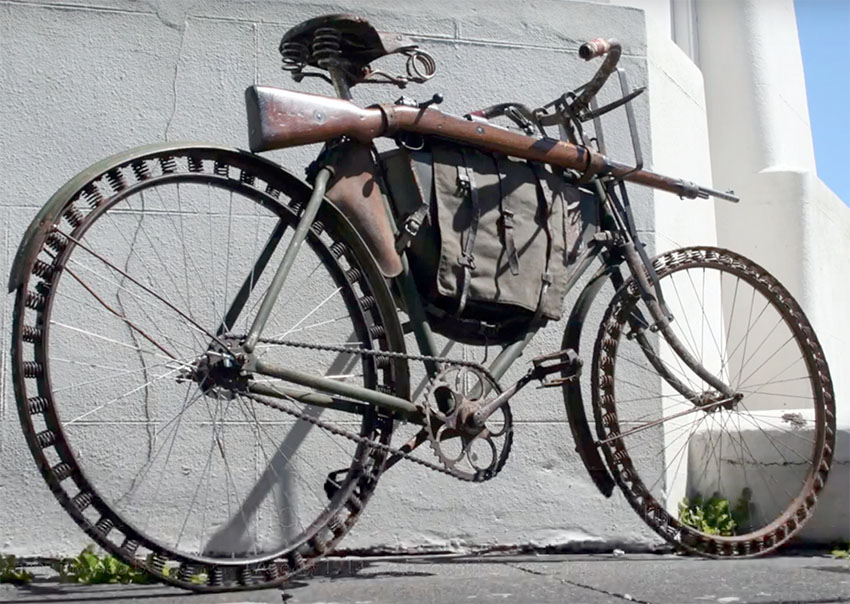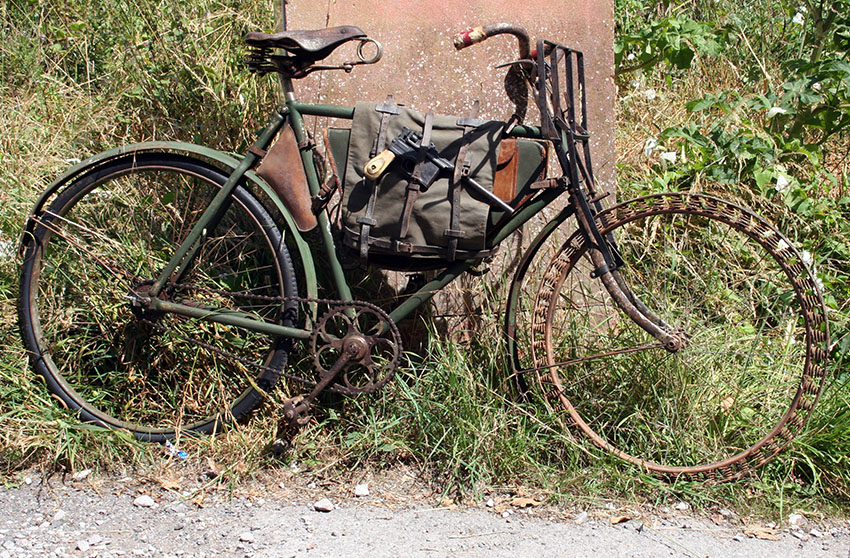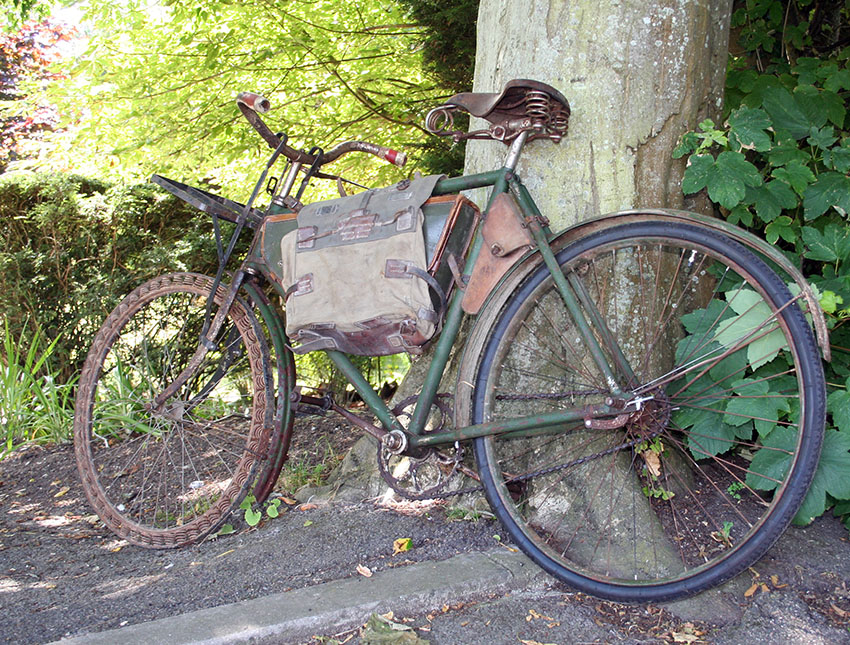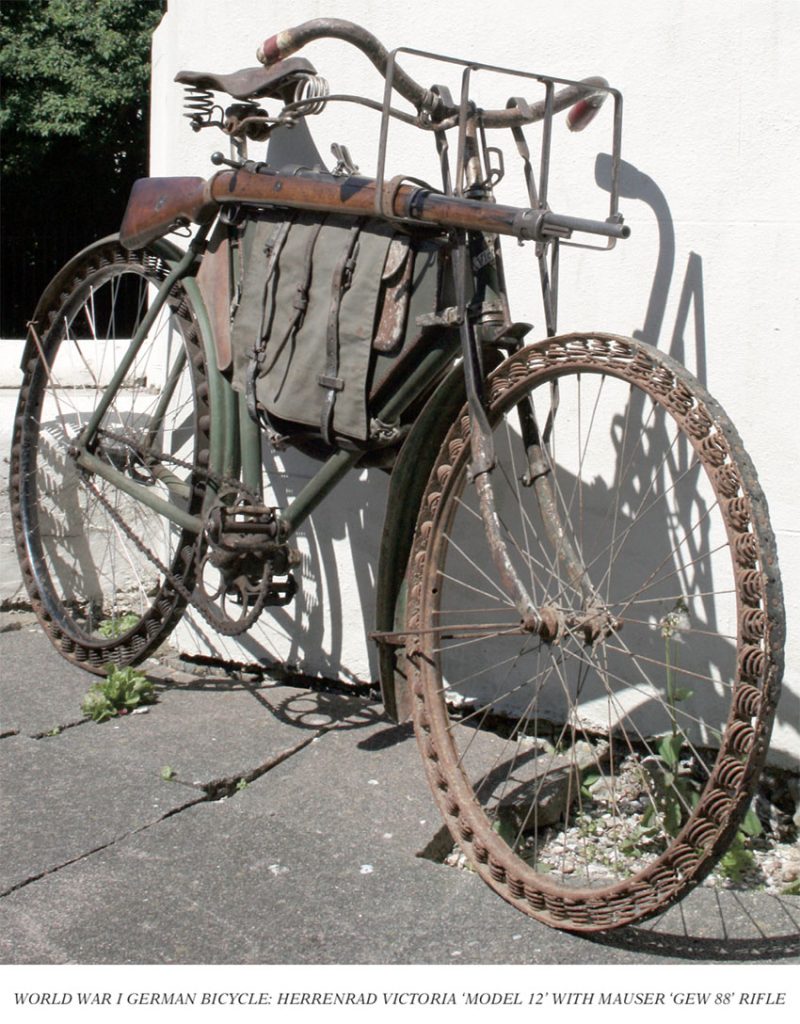GERMAN WAR BICYCLE FROM WW1
The whole military histories of 1.5 million Bavarian troops who fought during WWI are now available online, including that of then-25-year-old volunteer Lance Corporal Adolf Hitler, who is now regarded as one of history’s most terrible villains. The soldier’s name, rank, date and place of birth, details of their active duty, religion, position or employment, marital status, parents’ names, and residence are all included in the individual records.
According to Hitler’s records, he was a ‘Catholic,’ a ‘Artist,’ and a ‘Messenger (bike rider) for the Regiment,’ whose job was to transport messages from the command staff to the battalions near the battlefield. In October 1916, he was ‘lightly wounded in the thigh by an artillery grenade near Le Barque’, and in October 1918, he was ‘gassed at La Montagne, transported to hospital.’ He was also given five medals, decorations, and other honours, including the Iron Cross – 1st and 2nd Class – twice.

At the outset of the war, each German Army Jager (light infantry) battalion had a bicycle company (Radfahr-Kompanie), and more companies were recruited throughout the conflict, bringing the total to 80 companies, some of which were organized into eight Radfahr-Bataillonen (bicycle battalions). Following the incident, the German Army undertook a research on bicycle usage and released the results in a report titled Die Radfahrertruppe.
Belgians, Germans, British, and French soldiers all used bicycles in the First World War, with various degrees of effectiveness. Unsurprisingly, the Italians were among those who used the bicycle the most. It was worn by the Bersaglieri, an elite light infantry regiment famed for their mobility tactics and flamboyant headdresses.
Although the bicycle did not turn the tide for either side in the First World War, it was used again a generation later in the Second World War, notably by British and American paratroopers who found the bike to be useful for reconnaissance, as well as by the Japanese, who faced rubber shortages and resorted to riding on the rims without tyres on rough jungle trails.
It was hard to avoid reflections of the terrible conflict that claimed millions of lives during the 2014 Tour de France. The organizers chose a course that followed the Western Front line, passing by fighting locations and passing through towns that have become practically associated with the conflict, such as Ypres, Reims, and Arras.
The Germans needed to mobilise vast amounts of troops during WW1, and bicycles were used wherever possible. As you can see from these photos, the majority were not accessorised with military fittings like the British machines. With much larger troop numbers, any available bicycle was used by the military.
Unlike the lightweight French bikes and middle weight British bikes, the normal style of civilian bicycle in Germany was a heavyweight roadster with front plunger brake and coaster rear hub, so they were ideally suited for military service.

WHAT DID THE GERMANS USE STATIONARY BIKES FOR IN WW1?
Rubber tires were only permitted on German bicycles designated for combat service from 1917. Despite the lack of sophisticated cargo bikes, military bicycles could nonetheless deliver ammunition, small guns, medical supplies, and food to the front lines.
DOES THE US MILITARY USE BICYCLES?
The Montague folding bike was designed for the US military under a DARPA contract to allow airborne soldiers to jump out of planes and into combat while riding a bike. The Paratrooper foldable bike, which is tough and portable, is now accessible to the general public.
WHO INVADED THE BICYCLE?
Bicycles are used by Japanese army. The invasion began on December 8, 1941, one hour and twenty minutes before the Japanese attack on Pearl Harbor, making it the Pacific War’s first significant combat.










